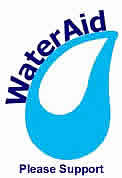
Most Visited
Rats In Your Home
Drain Flies
Why Drains Block
Internal Venting
Who`s Drain Is It ?
Drain Surveys
No-Dig Repairs
Drain Location
Drain Rods Stuck
Find A Contractor
Drain Pipe Work
Clay Drain Pipes
Plastic Pipe Work
Pitch Fibre Pipes
Cast Iron Pipes
Concrete Pipes
Drainage Parts
Drain Gullies
Dropshafts
Interceptor Traps
Soil Vent Pipes
Anti-Flood Valves
Manholes
Drain Repairs
Excavations
Drain Lining
Patch Lining
Pipe Bursting
Re-Rounding
Drainage
Investigations
Drain Surveys
Sonar Tracing
Last updated 11 January, 2014
draindmain.com > site map > sonar drain tracing
Sonar Drain TracingBack in the good old days you would send your drain rods down a system for twenty feet or more until you come to an obstruction, you would then measure out the distance with your rods and start to dig, this of course was fine unless there was a 45 degree bend in the middle of the run and you were way off the mark with your excavation. Modern push rod cameras are now so flexible that you can negotiate several bends and junctions without any problem other than you now have no idea where the camera is below ground. This is where your need a sonar drain tracer, as the image below shows the sonde or transmitter is placed in the drain, pipe or sewer and sent in the direction required, the transmitter sends a sonar pulse out and you follow it above ground using a receiver. The pulse signal is sent in a circular or arch configuration therefore if you adjust the receiver so that you are picking up the minimal signal you are directly over the top of the transmitter.  Well that`s the theory anyhow and for the most part they are spot on in the hands of an experienced operator, some of the earlier units were prone to interference from electric cables. Cast iron pipes, manhole covers (buried) and rebar in concrete slabs could throw the signal out a bit but with experience you learned when to rely on a signal or not. The transmitters can be attached to drain rods, carbon line threaders or jetting units and many of the newer push rod and crawler camera units have them built in. Drainage contractors use sonar to pinpoint defects seen in CCTV Surveys prior to excavation, to locate buried chambers, septic tanks and interceptor traps they are also useful for working out the depth of a system at a certain point prior to submitting your price for an excavation and renewal or sewer connection.
There are modern sonar tracers that can work in cast iron pipes and many give a digital reading of the depth, some of these sonar systems can work at depths of 12 meters and more however i have yet to lose anything at that kind of depth i was willing to trace and hand dig down to..
|
||||||||||||
 Builders and underpinning contractors should use this technology prior to undertaking works around existing drainage and sewer systems but seldom do, if you intend to build an extension within a few meters of a local authority sewer they will often insist that the line be sonar traced as the drawings they have on record are only an indication of where the drain may be and the onus is on yourselves to prove its actual position.
Builders and underpinning contractors should use this technology prior to undertaking works around existing drainage and sewer systems but seldom do, if you intend to build an extension within a few meters of a local authority sewer they will often insist that the line be sonar traced as the drawings they have on record are only an indication of where the drain may be and the onus is on yourselves to prove its actual position.
